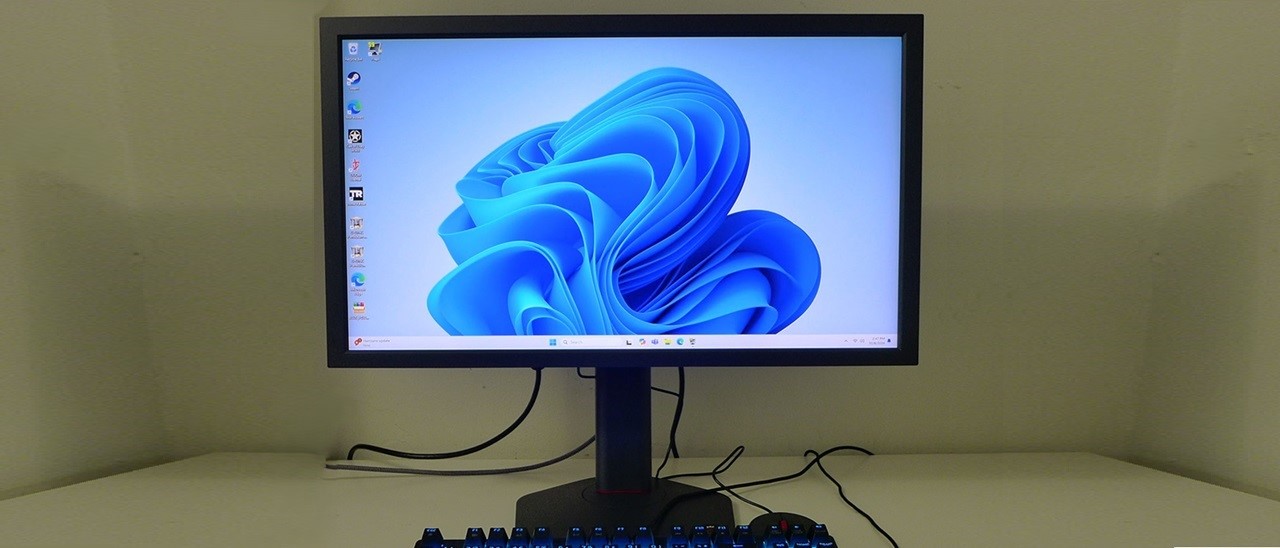Why you can trust Tom's Hardware
The comparison group is made from monitors running between 280 and 540 Hz. These are the fastest LCD panels currently available for sale. At 280 Hz are two Lenovos, the Y25-30 and R25f-30. At 360 Hz is Alienware’s AW2523HF. The XL2566X+ runs at 400 Hz. At 500 Hz is Alienware’s AW2524HF and the 540 Hz slot belongs to Asus’ PG248QP. All are 25-inch screens with FHD 1920x1080 resolution.
Pixel Response and Input Lag
Click here to read up on our pixel response and input lag testing procedures.
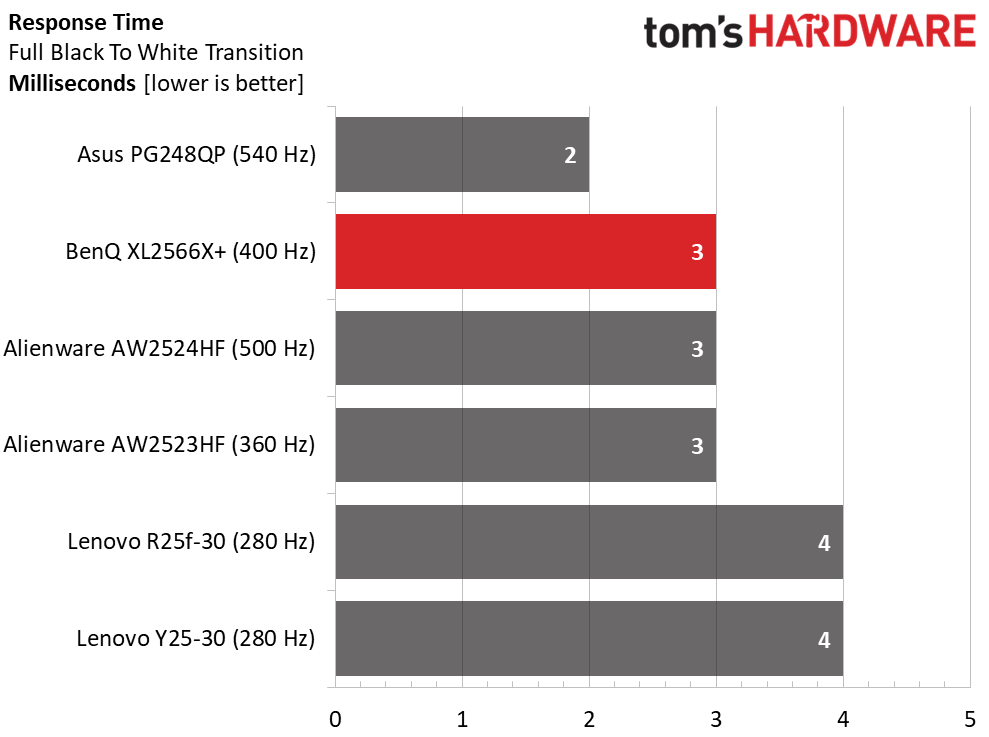
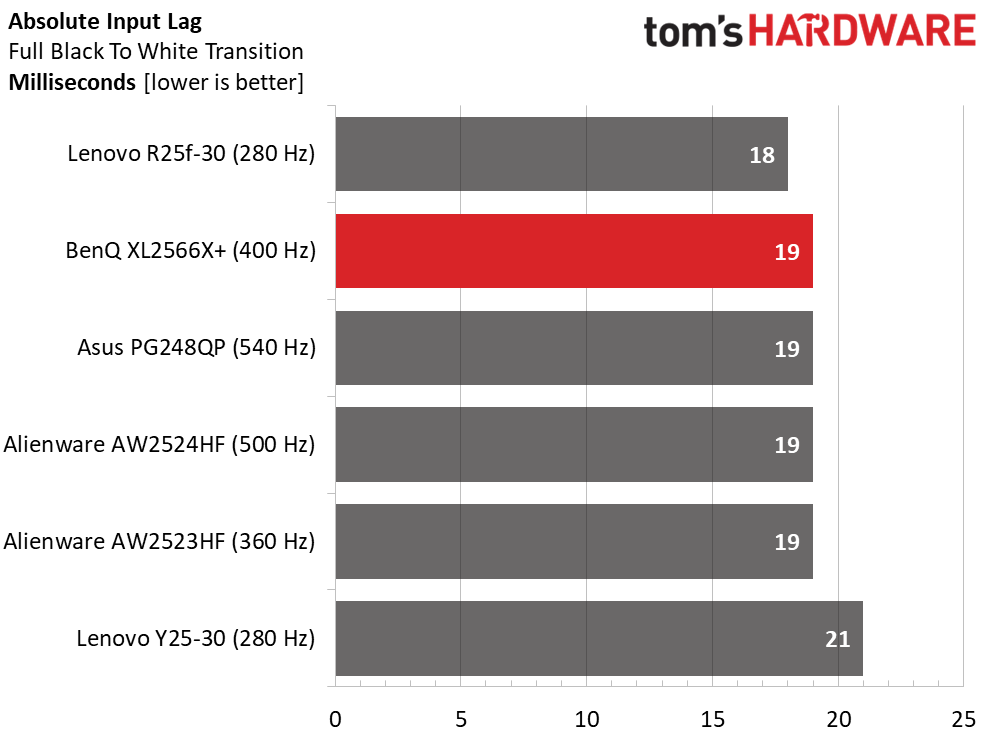
The Asus has the quickest panel response at 2ms. but the rest aren’t far behind. 360-500 Hz will get you 3ms and 280 Hz takes 4ms to draw a full white field. In all cases, this means perfect motion resolution at full speed. Moving objects retain full clarity of detail.
The input lag scores are equally close. Only 3ms separates the entire group. The XL2566X+ is second from the top at 19ms of total control delay. That’s competition level but so are all the others. In a side-by-side comparison, it will be hard to perceive a difference in feel between any of these monitors. And note that a 280 Hz Lenovo is the top dog here.
Test Takeaway: It’s a safe choice to buy any monitor that runs at 280 Hz or faster. You’ll get perfect motion resolution and the lowest input lag available from a display. The XL2566X+ plays in the sandbox with the very best and like the competition, it represents a less expensive alternative to a premium OLED. You’ll have nothing but a satisfying gameplay experience with this BenQ.
Viewing Angles
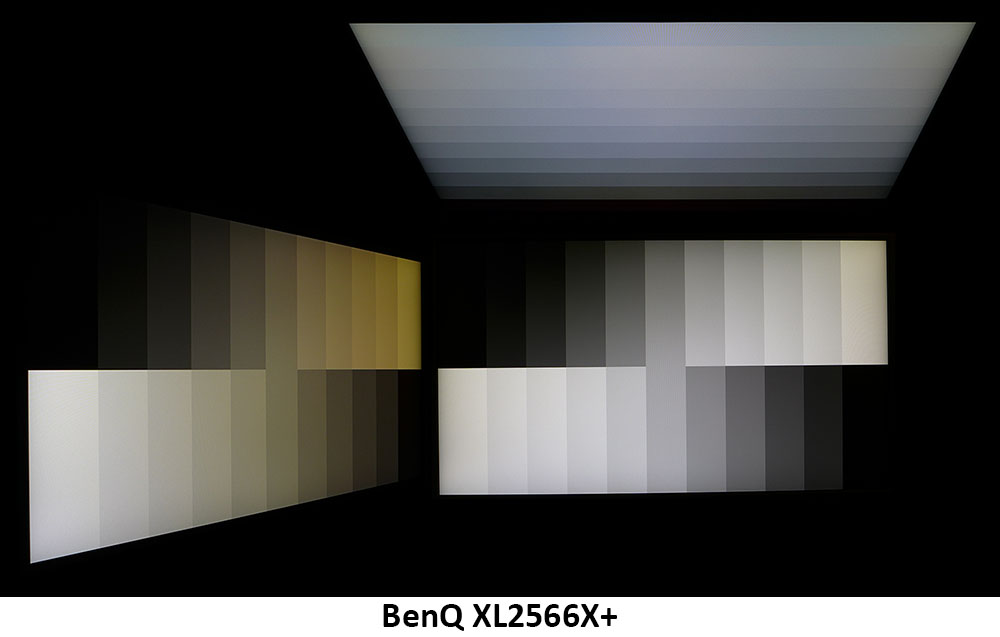
TN screens are at a disadvantage when viewed from the sides. The XL2566X+ shows typical performance in this regard. You can see a clear shift to green but in its favor, there is no real light output reduction and gamma stays constant. You’ll see a color shift, but the image detail will remain. The XL2566X+ is better than most TN screens in this test.
Screen Uniformity
To learn how we measure screen uniformity, click here.
Get Tom's Hardware's best news and in-depth reviews, straight to your inbox.
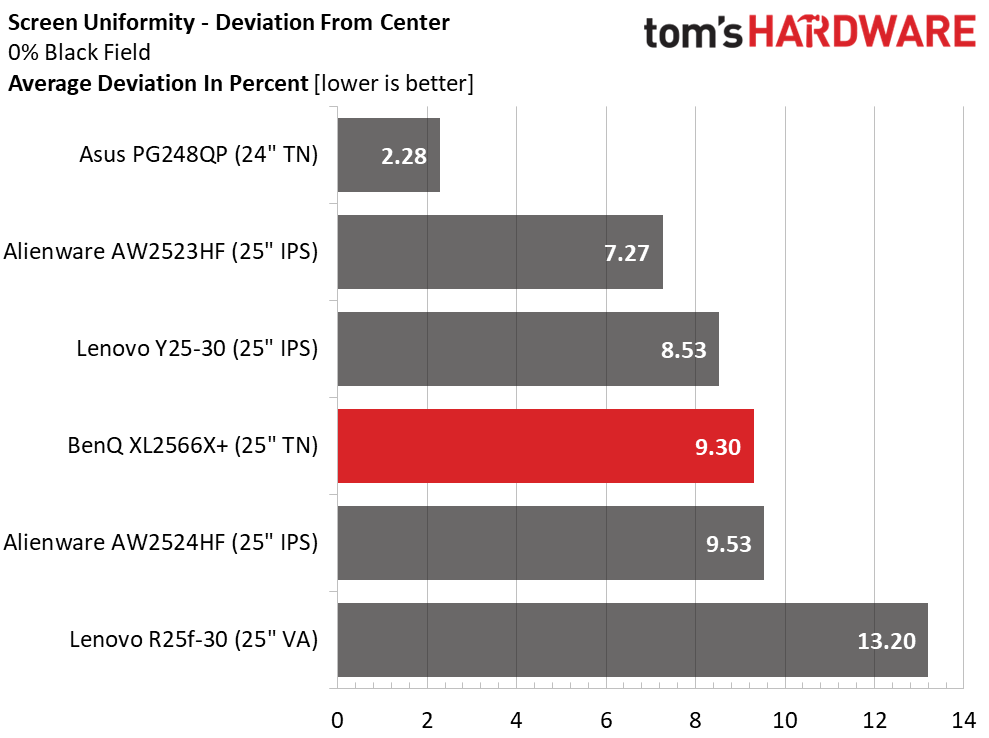
The XL2566X+ does well in my field uniformity test. There are no visible hotspots, nor is there bleed or glow of any kind. A 9.3% score is below the visible threshold. This is solid performance.
MORE: Best Gaming Monitors
MORE: How We Test PC Monitors
MORE: How to Buy a PC Monitor
Current page: Response, Input Lag, Viewing Angles and Uniformity
Prev Page Features and Specifications Next Page Brightness and Contrast
Christian Eberle is a Contributing Editor for Tom's Hardware US. He's a veteran reviewer of A/V equipment, specializing in monitors. Christian began his obsession with tech when he built his first PC in 1991, a 286 running DOS 3.0 at a blazing 12MHz. In 2006, he undertook training from the Imaging Science Foundation in video calibration and testing and thus started a passion for precise imaging that persists to this day. He is also a professional musician with a degree from the New England Conservatory as a classical bassoonist which he used to good effect as a performer with the West Point Army Band from 1987 to 2013. He enjoys watching movies and listening to high-end audio in his custom-built home theater and can be seen riding trails near his home on a race-ready ICE VTX recumbent trike. Christian enjoys the endless summer in Florida where he lives with his wife and Chihuahua and plays with orchestras around the state.
-
helper800 I would say OLEDs do it much better, hz for hz, than this TN panel for the same price.Reply -
UnforcedERROR I wish BenQ would move on from TN panels. They've been coasting off their reputation ever since they released the xl2420T and haven't attempted to innovate at all, especially since they are routinely chosen for LAN events. OLEDs are better for motion clarity even at lower refresh rates, and a TN priced around the same cost as some of the 360hz offerings is ridiculous.Reply
